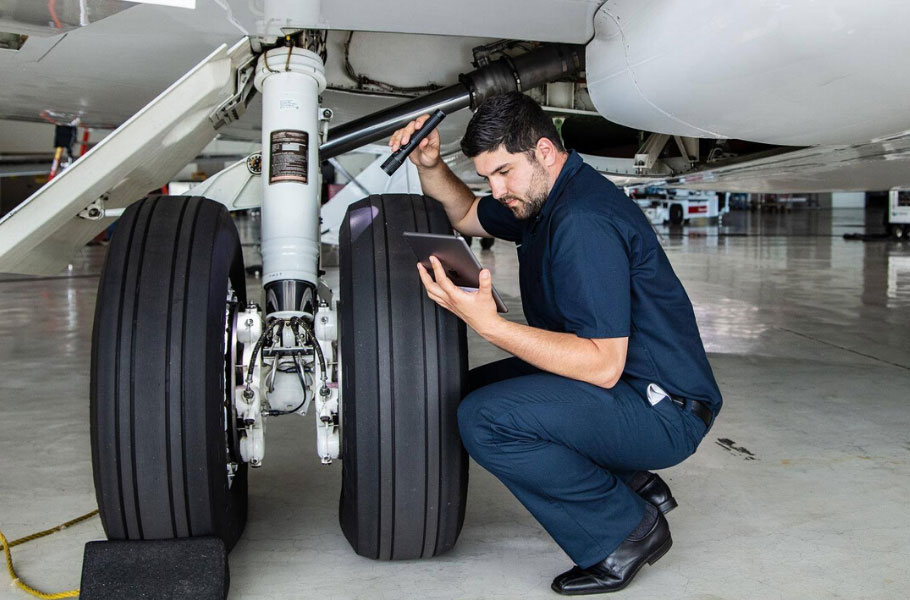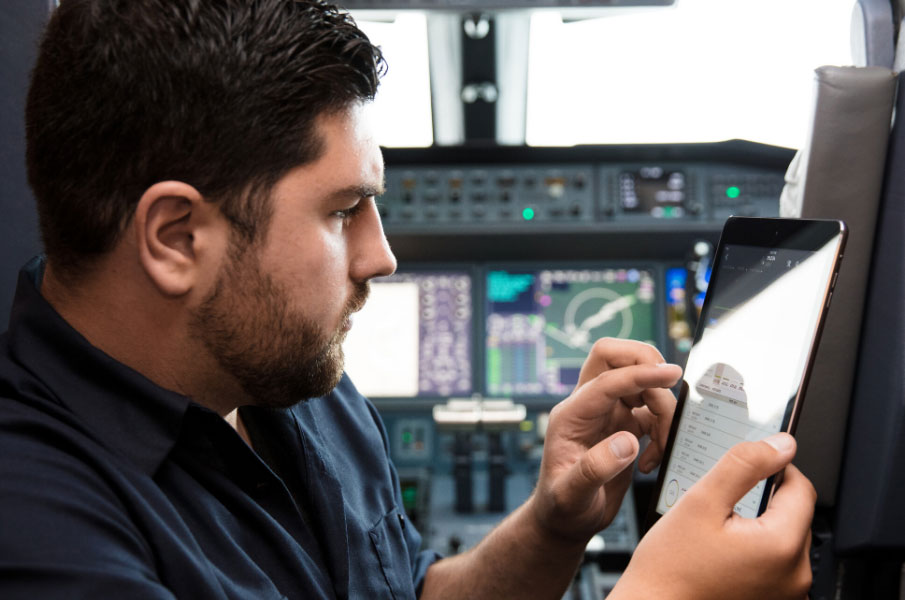Click Here to View This Page on Production Frontend
Click Here to Export Node Content
Click Here to View Printer-Friendly Version (Raw Backend)
Note: front-end display has links to styled print versions.
Content Node ID: 400728
“Neither snow nor rain nor heat nor gloom of night stays these couriers from the swift completion of their appointed rounds.”
That line, which has been associated with the U.S. Postal Service for more than 100 years, could just as easily apply to Honeywell’s global team of field service engineers (FSEs). Senior Director of global field service engineering Phil Alcock, and a team of dedicated FSEs literally follow the sun to ensure that they deliver a solution whenever a customer has an issue with any Honeywell product.
“We have 144 field service engineers around the world, and the number-one goal of each of them is to make our customers’ lives easier,” Alcock said. “There’s a lot of technology on today’s aircraft, and it takes a great deal of knowledge and expertise to isolate and solve AOG [Aircraft on Ground] issues quickly. In many cases, it takes input from multiple FSEs to troubleshoot the problem, so we’ve developed a virtual network that enables our experts to work together even if they are in different parts of the world.”
The sun never sets on Honeywell’s FSEs.
Alcock explained that to help ensure that AOGs are solved quickly, the Honeywell FSE network’s global customer-support team employs a “follow the sun” philosophy. He shared the following example of how that works.
“We had a recent situation where a Gulfstream G550 customer contacted Honeywell Aerospace Technical Support [ATS] regarding a pending AOG on his EPIC system,” he said. “That contact was turned over to our UK-based field service engineer. The failure description, and the fact that the aircraft was pending AOG in Singapore, made it clear that in-depth system knowledge was required to assist the customer. A Primus EPIC expert in Europe was immediately engaged, and conference calls were arranged with the Asia Pacific team to ensure that all parties were fully aligned with the issue.
“All the troubleshooting data pointed to a defective Advanced Graphic Module [AGM],” Alcock continued. “A spare AGM was immediately procured just in case it was required, while troubleshooting investigations continued within Honeywell ATS field service team. At the end of the working day in Europe, the case was handed over to the U.S.-based ATS team, where further assistance was provided by the Honeywell field service engineer experts onsite at Gulfstream.

“Progressively following the sun at the end of the U.S. workday,” Alcock said, “the American field service team handed the case over to the Honeywell Asia Pacific ATS field service team for further troubleshooting before seamlessly transferring the project to the EMEAI [Europe, Middle East, Asia, and India] EPIC expert the next morning. A telephone conference was established with all interested parties and—based on the customers findings and results from the previous 24 hours—the EMEAI Honeywell EPIC expert deduced that the AGM module was working correctly, enabling him to focus on the software-loading process.”
The bottom line: by working with the customer on the phone, the ATS field service team was able to reload all the software and databases without further component replacements and get the aircraft released back to service.
“This is just one example of our commitment to collaboratively working on a problem until it is solved,” Alcock said. “Sometimes that means we have to adapt our model so that it best serves our customer.”
Reach out and touch the solution.
Of course, with Honeywell-equipped business jets and air-transport aircraft located in literally every corner of the world, it’s impossible to have an FSE available to visit every AOG personally in the timeframe required.
In many situations, an alternative tool developed that the FSE can use, is the company’s Aerospace Remote Connect (ARC) tool to log in (with the customer’s approval, of course) to the aircraft. One such example Alcock shared is the following:
“Recently, a customer suspected a hardware problem with an Aspire 100 handset,” he stated. “Because the FSE could access the system via the ARC, he logged into the aircraft’s system and was able to review the configuration of all the handsets on the airplane. That’s when he found the problem was due to misconfiguration.”
“In a short time, he was able to remotely upgrade all four cabin handsets, as well as the system’s cabin service unit [CSU] to the latest firmware, so the aircraft could quickly return to service,” Alcock said.
Technology is good. Knowledge is better.
Alcock stressed that while Honeywell’s global FSE team has the latest remote and local troubleshooting tools at their disposal, nothing beats firsthand experience.
“We’re a technology company that puts a high value on the benefits of sharing that information on a person-to-person level,” he said. “We’ve found one of the best ways we can do that is through our Operator Conferences. They give us the opportunity to talk to our customers and learn about their needs and challenges.”
Honeywell’s Operator Conferences are so beneficial that the company is increasing the number of global meetings by 20 percent in 2020. In North America and Latin America alone, it is now supporting 20 business and general aviation operator-engagement events.
Alcock also explained that customer issues that an FSE handles are chronicled in detail and shared among the team and Honeywell customers. Today, the Technical Knowledge Center has some 10,000 articles and growing by the day.

“Our customers find this information invaluable and allows an alternate self-help method of gleaning knowledge and information written by experienced field service engineers without having to call or email,” he stated.
“Sharing experience is a great asset to our FSEs and our customers. To make it easy to find articles, videos, or examples, we’ve created a new self-help Portal System,” Alcock said. “It’s a one-click gateway to our entire tech-support library. Customers may also raise a case with us directly from there if they don’t find the answer via our web form. It’s extremely popular with our customers.”
Customer satisfaction is the FSE’s number-one priority.
With thousands of Honeywell-equipped aircraft flying tens of thousands of hours around the world every year, things are bound to happen. But what Alcock is exceptionally proud of is the high rate of issue-solving success the FSE team has achieved.
“Last year, we handled over 52,000 cases, and our first-contact resolution rate was an amazing 92 percent,” he said. “We were also able to close nearly 90 percent of the cases in under 48 hours, which is something we are extremely happy about.”
“We are always looking for continuous improvement, so we have set our goals higher to reduce this time going forward,” Alcock explained. “Our newly launched prioritization system of cases we receive will help us achieve just that and we’re already seeing great success.”
“Whether it’s an engine or a cabin handset, our customers expect the best performance from Honeywell products,” he said. “Everyone on the FSE team takes great pride in the fact that we continue to improve and strive to be the best. Our Customer Effort Score was 97 percent in 2019; we’re working on going higher in 2020.”